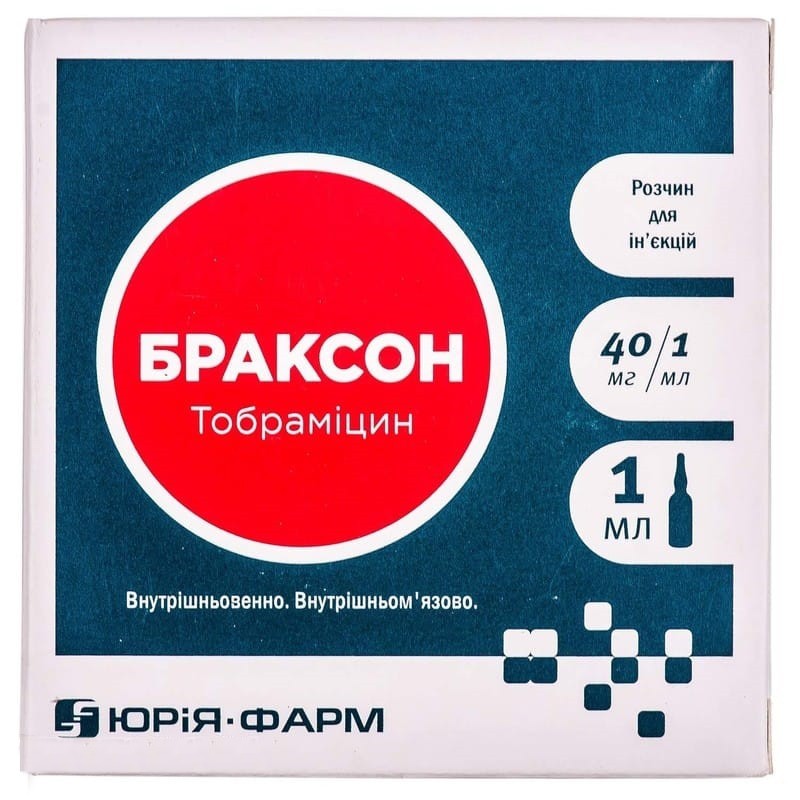



 Secure and encrypted payment processing
Secure and encrypted payment processing We ship to over 40 countries including the USA, UK, Europe, Australia and Japan
We ship to over 40 countries including the USA, UK, Europe, Australia and Japan Guaranteed refund or reship if you haven't received your order
Guaranteed refund or reship if you haven't received your orderBraxon injection solution is indicated for severe infectious diseases caused by microorganisms that are sensitive to the drug:
Active substance: tobramycin;
1 ml of tobramycin (in the form of sulfate) - 40 mg;
Excipients: sodium edetate, sodium sulfite anhydrous, water for injection.
Hypersensitivity to tobramycin or other aminoglycoside antibiotics.
Neuritis of the auditory nerve, severe chronic renal failure.
The drug is used intramuscularly (i / m) or intravenously (i / v) drip. For IM use, the appropriate dose is administered directly from the ampoule.
For iv administration, the solution is diluted in 100-200 ml of 0.9% sodium chloride solution or 5% glucose solution, administered for 20-60 minutes.
It should be prescribed to pregnant women only in cases where the potential benefit significantly exceeds the potential risk.
Apply from the first days of life.
The drug is used in a hospital setting.
Symptoms: toxic reactions (hearing loss, ataxia, dizziness, urination disorder, thirst, loss of appetite, nausea, vomiting, tinnitus or a feeling of stuffy ears, nephronecrosis - increased urea concentration, hypercreatininemia, proteinuria, oliguria), respiratory muscles paralysis.
Treatment of patients with normal renal function is carried out by fluid infusion and forced diuresis; patients with impaired renal function - hemodialysis or peritoneal dialysis. In case of neuromuscular blockade - anticholinesterase drugs, calcium salts during respiratory arrest - mechanical ventilation, other symptomatic and supportive therapy.
Tobramycin enhances the action of non-depolarizing muscle relaxants.
Reduces the effect of anti-myasthenic drugs.
Aminoglycosides, cephalosporins, vancomycin, polymyxin, diuretics increase the risk of oto- and nephrotoxicity.
Beta-lactam antibiotics weaken the effect.
Intravenous administration of indomethacin reduces the renal clearance of tobramycin,increasing the concentration in the blood and increases the half-life (T 1/2) (may require correction of the dosage regimen).
Methoxyflurane increases the risk of adverse reactions.
Medicines for inhalation general anesthesia (halogen-containing carbohydrates), narcotic analgesics, transfusion of large volumes of blood with citrate preservatives as anticoagulants, drugs that block neuromuscular transmission, increase neuromuscular blockade.
Store at a temperature not exceeding 30 ° C.
Keep out of the reach of children.
Shelf life is 2 years.